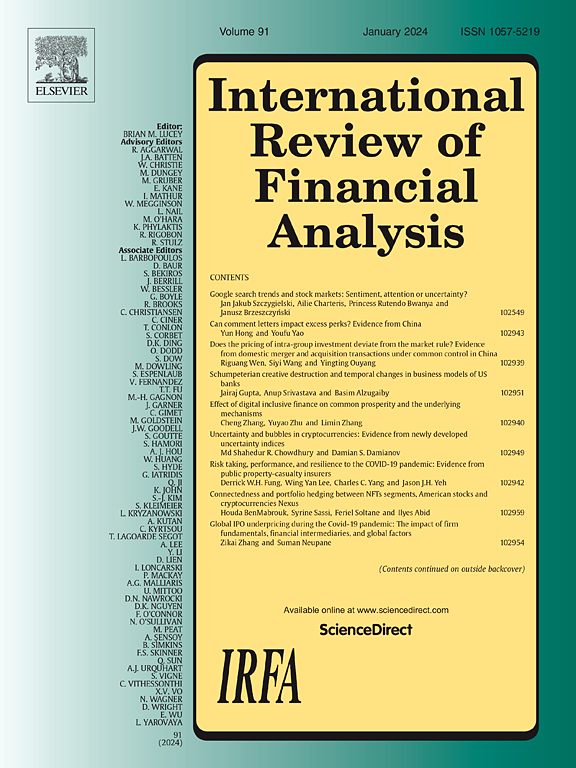Physical vs. Transition climate risks: Asymmetric effects on stock return predictability
IF 7.5
1区 经济学
Q1 BUSINESS, FINANCE
引用次数: 0
Abstract
This paper examines the predictive role of two dominant climate risk categories – physical and transition risks – in forecasting U.S. equity market risk premiums. The results reveal a pronounced asymmetry: physical climate risk significantly and negatively predicts stock returns both in-sample and out-of-sample, whereas transition climate risk demonstrates insignificant forecasting ability. This superior performance of physical risk delivers greater economic gains to investors and remains robust even after controlling for widely used economic predictors. However, its predictability is state-dependent, weakening during economic disruptions and strengthening following the COP21 Agreement. Further analysis shows that the cash flow and sentiment channels potentially drive the strong predictability of physical risk. Overall, our findings underscore the importance of incorporating physical climate risk into equity return forecasting models, offering actionable insights for financial decision-making processes.
物理与转型气候风险:对股票收益可预测性的不对称影响
本文考察了两种主要的气候风险类别——物理风险和过渡风险——在预测美国股票市场风险溢价中的预测作用。结果显示出明显的不对称性:物理气候风险对样本内和样本外股票收益的预测显著且负向,而过渡气候风险对股票收益的预测能力不显著。这种优异的实物风险表现为投资者带来了更大的经济收益,即使在控制了广泛使用的经济预测指标之后,这种表现仍然强劲。然而,其可预测性依赖于国家,在经济中断期间减弱,在COP21协议之后增强。进一步分析表明,现金流和情绪通道潜在地推动了实物风险的强可预测性。总体而言,我们的研究结果强调了将物理气候风险纳入股票回报预测模型的重要性,为财务决策过程提供了可操作的见解。
本文章由计算机程序翻译,如有差异,请以英文原文为准。
求助全文
约1分钟内获得全文
求助全文
来源期刊

International Review of Financial Analysis
BUSINESS, FINANCE-
CiteScore
10.30
自引率
9.80%
发文量
366
期刊介绍:
The International Review of Financial Analysis (IRFA) is an impartial refereed journal designed to serve as a platform for high-quality financial research. It welcomes a diverse range of financial research topics and maintains an unbiased selection process. While not limited to U.S.-centric subjects, IRFA, as its title suggests, is open to valuable research contributions from around the world.
 求助内容:
求助内容: 应助结果提醒方式:
应助结果提醒方式:


